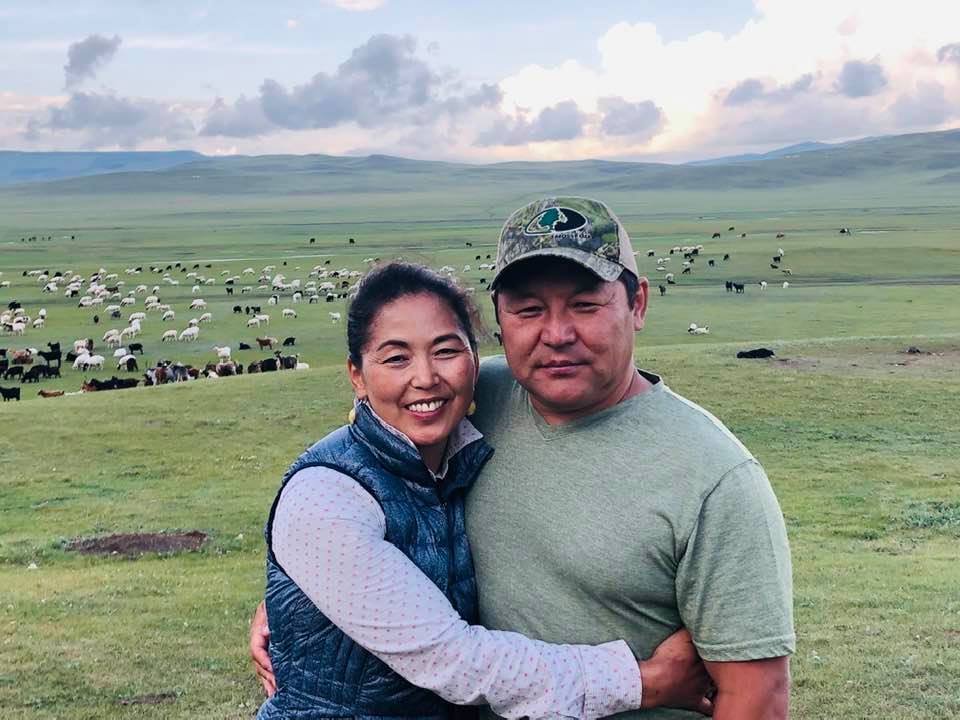Genghis Khan
 In 25 years, the Mongol army subjugated more lands and people than the Romans conquered in 400 years. Genghis Khan, together with his sons and grandsons, conquered the most densely populated civilizations of the 13th century from the Indus River to the Danube. Over their trade networks the Mongols brought printing technology, gunpowder and the compass to Europe.
In 25 years, the Mongol army subjugated more lands and people than the Romans conquered in 400 years. Genghis Khan, together with his sons and grandsons, conquered the most densely populated civilizations of the 13th century from the Indus River to the Danube. Over their trade networks the Mongols brought printing technology, gunpowder and the compass to Europe.
At the empire’s peak, Mongols controlled up to 12 million square miles. Despite its reputation for brutal warfare, the Mongol Empire briefly enabled peace, stability, and trade in the period “Pax Mongolica,” beginning in about 1279 and lasting until the empire’s end in about 1350, when the Bubonic Plague made its way along the same trade routes.
My study of history is usually focused on Europe and America, but now I’m ready to widen my perspective. Better sources about Genghis Kahn are now available. In 1990, Soviet occupation of Mongolia ended; Inner Asia was at last open to scholars who wanted to decipher a copy of The Secret History of the Mongols, that was found in Beijing in the 19th century, but written in Chinese characters that were hard to link with Mongolian place names.
Jack Weatherford, professor of anthropology at Macalester College in Minnesota, set out in 1990 to study the role of tribal people in the history of the Silk Route connecting China, the Middle East, and Europe.
I thought the my research was nearly finished when I arrived in Mongolia in 1998 to finalize the project with some background on the area of Genghis Khan’s youth…That trip turned into another five years of far more intensive research than I could have imagined. I found Mongolians to be delirious at their freedom from centuries of foreign rule, and much of the excitement centered on honoring the memory of their founding father, Genghis Khan.
For the first time in nearly eight centuries, the forbidden zone of his childhood and burial was open at the same time that the coded text of the Secret History had finally been deciphered. No single scholar could complete the task, but working together with a team from different backgrounds, we could begin to find answers.
What they found was that the Mongols had their own unique way of fighting. They traveled light–only cavalry, no infantry that could slow them down. Each warrior had five horses and they spread themselves out so that extra horses could graze as they traveled. Lots of other animals came, too, to sustain the soldiers’ protein-based diet. Scouts determined ideal cross-country routes and possible exit routes. The siege of a city began with bombardment from a safe distance to demoralize the population and generate fearful propaganda. Early and gruesome executions of resisters withered opposition.

As I read about the Mongolian scholars Weatherford worked with, I recalled the names of three Mongolian piano students who came to me through the MusicLink Foundation almost twenty years ago: Purev Arslanbaatar, Chinguun Vanjilnorov, and Naransukh Sukhee. They were recent immigrants whose families must have fled the turmoil that followed the Soviet pull-out. All three were excellent, thoughtful students. Purev now teaches choral music in a high school in Northern Virginia. Chinguun is a software engineer, working with a government contract company.

Naransukh graduated from Brigham Young University in 2021 and is a biochemist working at Petnet Solutions in Las Vegas. His father, Narangerel, was a doctor in Mongolia, who started as an orderly at DC Children’s Hospital. He is now a Registered Nurse. The Sukhee family are dedicated members of the Mormon Church. Crystal, a Facebook friend, is a School Nurse, a pillar of the Arlington Mongolian community, a naturalist, a gardener, an ardent feminist, and a baker of delicious breads. Here are the Sukhees on a visit to their homeland, where you can see the steppes and the animals that gave rise to and supported Genghis Khan’s armies.

The Silk Road, the trade route the Mongols first envied and later controlled, has always fascinated me. In 1999, I commissioned Jo Lombard to compose pieces for my students in celebration of the new Millennium. Inspired by an exhibit at the National Geographic Society Museum in DC, she produced Postcards from Marco Polo, a set of pieces about places along the Silk Road. In 2002 the Smithsonian Folklife Festival featured Yo Yo Ma’s Silk Road Ensemble and many artists from Mongolia. Yo Yo Ma, born in China, is a person I greatly admire. It was a pleasure to see him and his Silk Road Ensemble again at Chautauqua in 2018.
Another connection between Mongolians and music is the innovative way Genghis Khan’s army units communicated with one another. Officers composed their orders in rhyme, using a standardized system known to every soldier. Within fixed melodies and poetic styles, various words were altered to specify a message. For a soldier, hearing the message was like learning a new verse to a song he already knew, enabling him to send the message accurately by singing the new verse.
Having visited the Forbidden City, a World Heritage site in Beijing in 2006, I was astonished to learn that it was originally created by Genghis Khan’s grandson Khubilai Khan in the early 1300s, so that the Mongols could be isolated from the Chinese people they had conquered. Within this compound, they could wear Mongol clothes, drink their fermented drinks, slurp their soup, and cut meat with knives at the table. In contrast, Chinese people cut all meat in the kitchen, never at the dining table. So that’s why we never get knives at Chinese restaurants!
During Pax Mongolia in the late 13th and early 14th centuries, trade flourished. Mongol authorities issued paizas, tablets worn on chains around the neck that signified certain privileges, more or less a combined passport and credit card! The textiles they bought and sold still bear names identifying their origin: satin, a glossy fabric from Zaytun; damask from Damascus, and muslin from Mosul. And here’s how we got a word now in frequent use:
Mongol administrators found both Euroopean and Chinese mathematics too simple and impractical, but they adopted many useful innovations from Arabic and Indian mathematics. The cities of the Khwarism empire had been a particularly important center for mathematic scholarship; the word algorithm was driven from al Khwarism.
In 1390, one of Geoffrey Chaucer’s Canterbury Tales relates the adventures of Genghis Khan, who at that time seemed to be widely respected. Weatherford notes that Renaissance writers treated Mongols with open adulation. In 1492, more than a century after the last Khan ruled in China, Christopher Columbus convinced Ferdinand and Isabella that he could re-establish sea contact and revive lost commerce with the Mongol Court of the Great Khan by sailing west to the land described by Marco Polo. When he reached Cuba, Columbus believed that he was on the edge of Cathay. He decided that the people he met must be the southern neighbors of the Mongols in India, and thus called the native people of the Americas Indians, a term that stuck until recently.
Enlightenment writers like Montesquieu, however, held Asians in contempt. Voltaire, in his 1755 play, The Orphan of China, began the modern cursing of the Mongols, though his real target was the French King. Pseudo-scientific theorists wrote that the Mongoloid race exhibited a close kinship to Orangutans, the Asian apes. In an 1844 study, “Mongoloid” children were deemed to be products of incest. Fear of the “Yellow Peril” grew in the West.
In the 1930s Jawaharlal Nehru wrote to his daughter Indira about the place of Asia in world history: “It would be foolish not to recognize the greatness of Europe. But it would be equally foolish to forget the greatness of Asia.” The Mongols had created a remarkable civilization. Leading up to WW II Genghis Khan took on a new importance with regard to practical military applications. Soviets, Japanese and Germans all pushed to decipher, translate and interpret The Secret History of Genghis Khan to discover a key to prevailing over their foes.
The title of the 2002 Smithsonian Folklife Festival was The Silk Road: Connecting Cultures, Creating Trust. Weatherford’s book has expanded my scope of history, connected me with another culture, and helped me to include unfamiliar contributions to the “making of the modern world.” I hope it will do the same for many readers and thereby continue to connect cultures and create trust. I look forward to following up on some of the questions this book raises. I invite you to join me in this quest and let me know what new discoveries you find.
Leave a Reply